Every autumn, thousands of Canadian geese paint bold V-formations across Ontario’s skies, embarking on one of nature’s most remarkable journeys. These majestic birds, covering up to 1,500 kilometers in a single day, orchestrate their migration with extraordinary precision, using the Earth’s magnetic field and celestial navigation to guide their way. To observe wildlife safely, countless Ontarians gather at prime viewing spots like Long Point, the Toronto waterfront, and Point Pelee National Park between September and November. This annual spectacle isn’t just a testament to natural instinct—it’s a carefully timed response to changing daylight hours, dropping temperatures, and diminishing food sources. Whether you’re a seasoned birder or simply nature-curious, understanding these migration patterns offers a window into one of North America’s most fascinating wildlife phenomena, where ancient instincts meet modern survival strategies in our changing climate.
The V-Formation Masters of Ontario’s Skies
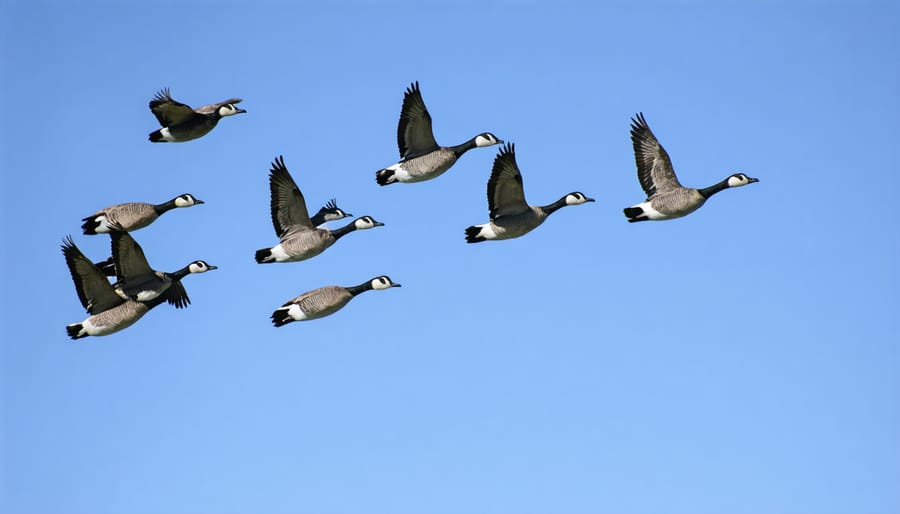
Why Ontario’s Waterways Are Geese Magnets
Ontario’s vast network of waterways, wetlands, and agricultural fields creates the perfect pit stop for Canadian geese during their migration. The province boasts over 250,000 lakes and countless rivers, offering these magnificent birds abundant water sources for rest and refreshment. These waterways aren’t just rest stops – they’re like five-star hotels for our feathered friends!
The Great Lakes shoreline plays a particularly crucial role, providing geese with protected bays and marshy areas rich in aquatic plants and invertebrates. Places like the shores of Lake Ontario and Lake Erie offer shallow waters perfect for feeding and roosting. In spring and fall, you’ll spot thousands of geese gathering in these areas, creating quite the spectacle!
Our agricultural landscape adds another layer of attraction. The combination of harvested grain fields near water bodies creates an ideal habitat where geese can safely rest and refuel. The flat, open terrain also allows them to easily spot potential predators while grazing. It’s no wonder Ontario has become such a popular destination on their migration route – it’s basically an all-inclusive resort for Canadian geese!
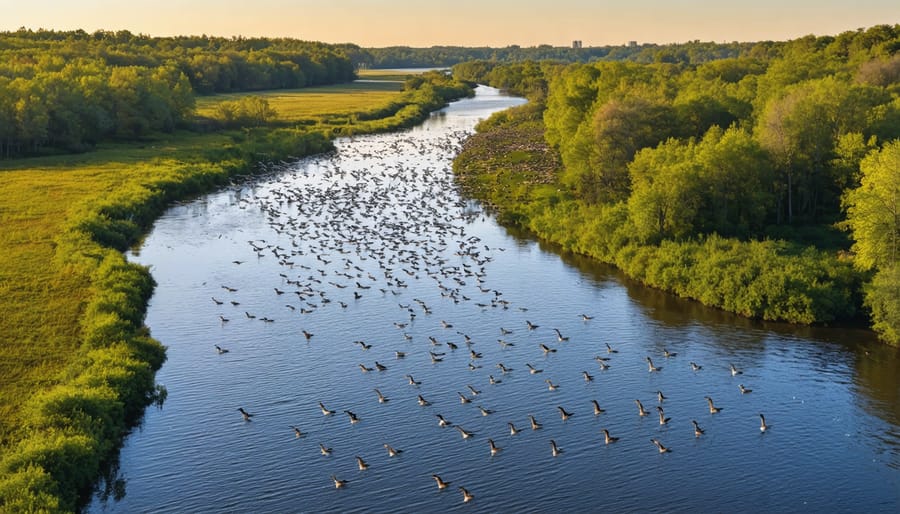
Seasonal Flight Schedule: When to Watch
Spring Migration: The Northern Return
As winter’s grip loosens, Canadian geese begin their remarkable journey northward, typically starting in late February to early March. These magnificent birds follow ancient pathways known as flyways, with Ontario sitting along the bustling Atlantic and Mississippi routes. The first waves usually arrive when daytime temperatures consistently reach above freezing and snow starts melting from fields.
Watch for the telltale V-formation in the sky, accompanied by their distinctive honking calls – nature’s own announcement of spring’s arrival. The geese time their migration perfectly with the thawing of lakes and wetlands, ensuring access to the aquatic plants and insects they need for energy.
In Ontario, peak spring migration occurs throughout March and early April, with different populations moving through in waves. The early birds, if you’ll pardon the pun, are usually local breeding pairs returning to familiar nesting grounds. They’re followed by birds heading further north to the Hudson Bay Lowlands and Arctic regions.
For the best viewing opportunities, head out during early morning or late afternoon when the geese are most active. Look for them resting and feeding in open fields, particularly those with leftover grain or fresh spring growth.
Fall Migration: The Southern Journey
As the crisp autumn air settles over Ontario, our Canadian geese begin their remarkable southern journey, typically starting in late September through October. These magnificent birds gather in impressive V-formations, creating a spectacular show against the colorful fall foliage. The timing of their departure is fascinating – they seem to have an internal calendar that responds to shorter days and cooling temperatures.
Most Ontario geese head toward the mid-Atlantic United States, though some venture as far as the Gulf Coast. They travel at an impressive speed of 40-70 kilometers per hour, covering anywhere from 200-400 kilometers per day when conditions are favorable. What’s really interesting is that they often make this journey in stages, stopping at familiar resting spots – or “staging areas” – along the way.
During fall migration, you’ll notice geese are more vocal than usual. Those distinctive honking calls help family groups stay together and communicate about rest stops and potential dangers. They’ll often feed heavily in our agricultural fields before departure, building up energy reserves for their long journey south.
Here’s a handy tip: the best time to watch their departure is early morning or late afternoon, especially after a cold front passes through. These weather conditions often trigger large groups to take flight, creating unforgettable views for nature enthusiasts.
Prime Viewing Spots in Ontario
Visitor Tips and Photography Pointers
For the best viewing experience, arrive at your chosen location just before sunrise or sunset when geese are most active. Bring binoculars and a camera with a telephoto lens to capture these magnificent birds without disturbing them. Follow these essential wildlife watching tips to ensure a respectful distance. Position yourself with the sun behind you for optimal lighting and clearer photographs. Dress in muted colors and avoid sudden movements that might startle the birds. Popular viewing spots can get busy during peak migration, so arrive early to secure a good spot. Remember to bring a tripod for steady shots and pack extra memory cards – you’ll be surprised how many photos you’ll want to take of these graceful creatures in flight!
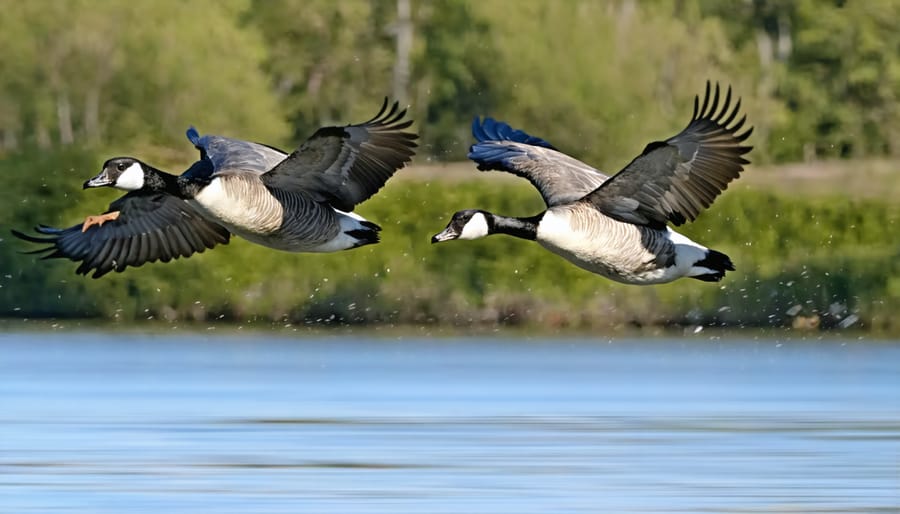
The annual migration of Canadian geese is truly one of nature’s most spectacular shows, and we’re fortunate to have front-row seats right here in Ontario. From their V-formation flights to their distinctive honking calls, these remarkable birds paint the sky with their grace and determination twice each year. Whether you’re watching from the shores of Lake Ontario, the wetlands of Long Point, or your local park, witnessing this natural phenomenon firsthand creates unforgettable memories. So grab your binoculars, pack a thermos of hot chocolate, and head to one of our province’s many viewing spots this migration season. Remember to maintain a respectful distance and practice responsible wildlife viewing – our feathered friends will thank you for it. By understanding and appreciating these incredible birds, we become better stewards of the natural world that we all share.


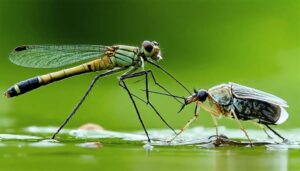
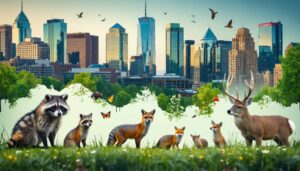








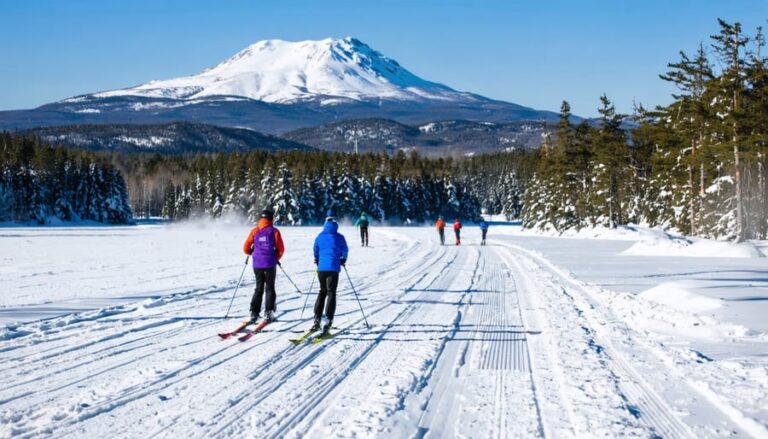

+ There are no comments
Add yours